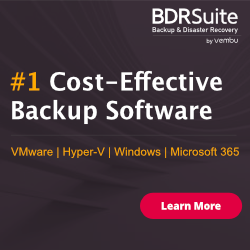
We’ve reached a milestone in our vSphere 9.0 Performance Series.
So far, we’ve tuned:
-
Physical hardware
-
Hypervisor (ESXi) settings
-
Guest OS configurations
Now, it’s time to zoom out and look at managing your environment at scale.
The question is:
How do you keep clusters balanced, workloads performing smoothly, and migrations seamless—without constant manual intervention?
The answer lies in two of vSphere’s most powerful features:
-
Distributed Resource Scheduler (DRS) – The brains behind cluster load balancing.
-
vMotion – The magic of live migration.
Today, we’ll deep dive into how these work and share tuning tips to achieve peak performance.
1. DRS: The Automated Cluster Load Balancer
Distributed Resource Scheduler (DRS) transforms a group of ESXi hosts into a single, intelligent resource pool.
It continuously:
-
Monitors CPU and memory usage across hosts
-
Moves VMs via vMotion to keep workloads balanced
-
Ensures every VM gets the resources it needs, automatically
DRS Best Practices
Homogeneous Clusters Work Best
-
Keep hosts similar in CPU and memory.
-
Mixing hardware is possible using EVC (Enhanced vMotion Compatibility), but uniformity makes balancing more predictable.
Shared Storage is Essential
-
All hosts must have access to the same datastores.
-
This ensures VM mobility, allowing DRS to move any VM to any host without storage constraints.
Right-Size Your VMs
-
Oversized VMs limit DRS flexibility and slow migrations.
-
Allocate only the vCPU and memory needed.
Why it matters:
Smaller, right-sized VMs = faster vMotions, better resource efficiency, and more balancing options.
New DRS Logic (vSphere 7.0 and Above)
Old Way: Host-Centric
-
Focused on balancing host utilization evenly.
-
Example: Host A and Host B would both be kept near similar CPU usage.
New Way: Workload-Centric
-
Focuses on VM happiness, not just host balance.
-
DRS calculates a Cluster DRS Score, reflecting how well VMs are getting resources.
-
Score above 80% = workloads are healthy.
Key takeaway:
It’s no longer about every host being equal—it’s about VM performance and experience.
Tuning the Migration Threshold
The migration threshold slider determines how aggressively DRS moves workloads:
-
Level 1: Minimal moves—only required actions (e.g., maintenance).
-
Level 3 (Default): Best for most stable environments.
-
Level 5: Ideal for highly dynamic or bursty workloads that need rapid rebalancing.
2. vMotion: The Magic of Live Migration
vMotion is the engine behind DRS.
It allows you to move a running VM between hosts with zero downtime, ensuring uninterrupted services.
However, vMotion performance depends heavily on the network.
Network Optimization for vMotion
10Gbps is the Baseline
-
Modern environments should have dedicated 10Gbps networks for vMotion.
-
Faster links = smoother, quicker migrations.
Multiple NICs for Throughput & Redundancy
-
Configure multiple vMotion vmkernel ports, each on separate physical NICs.
-
Benefits:
-
Higher total bandwidth
-
Built-in failover in case a NIC fails
-
Encrypted vMotion
-
Since vSphere 6.5, all vMotion traffic is encrypted by default.
-
Ensure CPUs support AES-NI to offload encryption and prevent performance degradation.
Unified Data Transport (UDT) – vSphere 8.0+
-
UDT boosts performance for:
-
Powered-off VM migrations
-
Clone operations
-
-
Uses vMotion networks more efficiently.
-
Tip: Configure your provisioning network on vMotion vmkernel ports to take advantage of this feature.
3. Storage vMotion: Moving VM Disks Without Downtime
Storage vMotion allows you to move a running VM’s storage from one datastore to another seamlessly.
Performance Factors
-
The speed depends on your storage fabric bandwidth.
VAAI – Your Secret Weapon
-
If your storage array supports VAAI (vStorage APIs for Array Integration):
-
Storage vMotion can offload the entire copy process to the array.
-
Result: Much faster and more efficient migrations.
-
4. Bringing It All Together
By combining DRS intelligence with vMotion’s mobility, you create:
-
A self-balancing cluster
-
Seamless workload mobility
-
Zero-downtime migrations
These are cornerstones of a resilient and efficient VMware environment.
Up Next in the Series
Our environment is now balanced and mobile.
In the final post, we’ll focus on:
-
vSAN optimization for high-performance storage
-
High Availability (HA) & Fault Tolerance (FT) for resilience
-
Lifecycle Manager for simplified updates and patching


